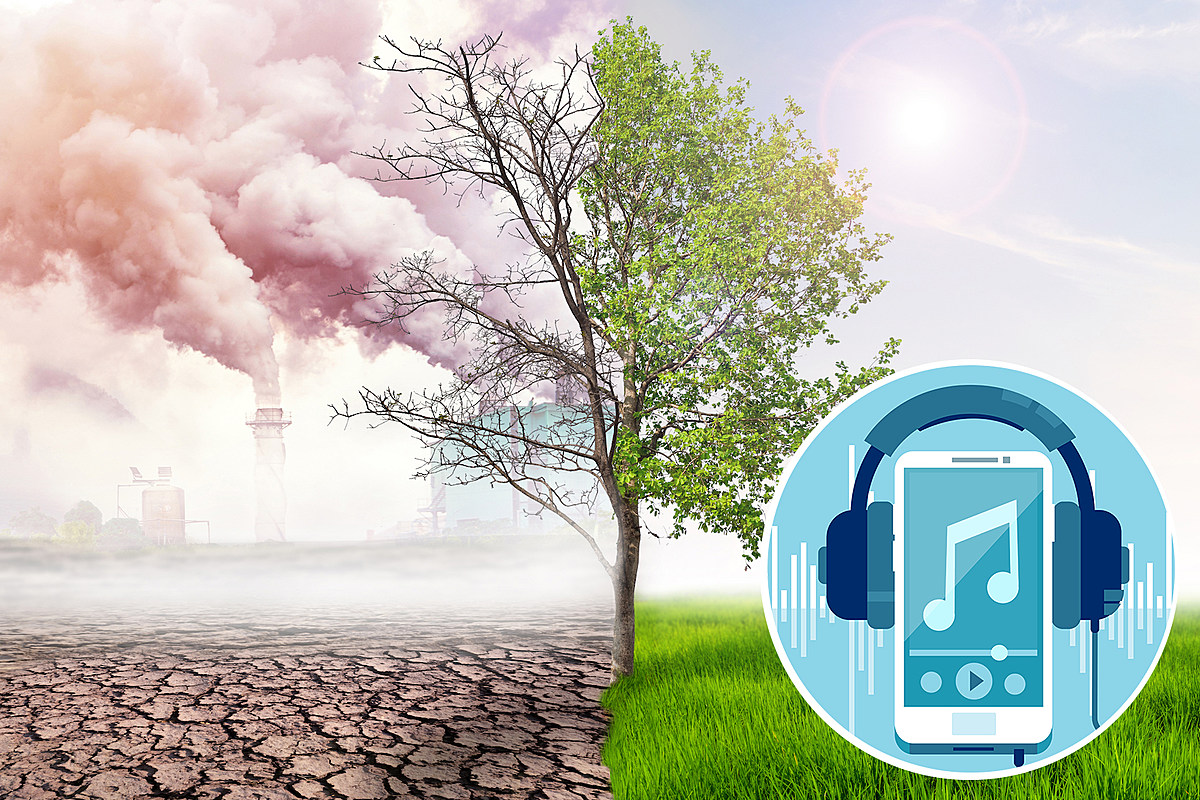
You can recycle, cut out plastic, switch to renewable products and use eco-friendly technology all you want, but if you listen to music, you’re still contributing to carbon emissions. However, some methods of consumption are less detrimental than others, and a new report by Rolling Stone explains how downloading music is actually better for the environment than streaming.
Physical album sales have increased in recent years, especially in the vinyl and cassette formats. In December of 2021, vinyl experienced its biggest sales week in the U.S. since 1991 when 2.11 million vinyl records were sold. This is partly due to vintage trends making a comeback and the booming vinyl community on social media platforms such as Instagram.
While it’s great to see people purchasing albums and artists making a genuine profit from all the sales, it’s actually harmful to the environment because many of the materials used in the records, CDs, cassettes and their packaging aren’t recyclable. Therefore, downloading and streaming are more environmentally-conscious methods of consuming music — but there’s still a difference between them.
The Rolling Stone article notes that downloading and streaming a song initially require the same amount of energy. But, once the track is downloaded, it takes less energy to play it again, whereas re-playing a streamed song will require the same amount of energy as it did the first time. This is mainly due to the fact that greenhouse gases are produced by both the listener and the Digital Service Provider (DSP) when streaming, and devices use twice the amount of battery life to play a streamed song as they do a downloaded one.
Spotify, one of the largest DSPs in the world, released a sustainability report in 2020, which stated that the servers used to allow listeners to stream music require a lot of energy, and thus produce over 70,000 tons of carbon dioxide per year, which is the most common greenhouse gas. Furthermore, listener use produced another 70,000 tons.
And that’s only Spotify — that doesn’t take Apple Music, Amazon Music and other streaming platforms into account, so imagine what the total looks like.
That being the case, downloading a song would only produce carbon emissions once, rather than every time it’s played via the streaming format. Rolling Stone asserted that there would be an 80 percent cut in carbon dioxide emissions if all songs were dowloaded instead of streamed, also due in part to the fact that less battery life would be used to listen to them on peoples’ devices.
Fortunately, Spotify’s premium account offering does give users the option to download songs and albums to their own library. So if you’re going to listen to a song or an album repetitively, it’s more cost-effective to download it, whether that be through Spotify’s premium account feature, or purchasing it individually. In fact, if someone were to stream an album over 27 times, it would be better for the Earth to just buy a tangible copy of it.
Plus, musicians really don’t make a lot of money from streaming services, unless they’re acquiring an absolutely massive amount of streams. Headphonesty revealed in early 2022 that Spotify pays artists $0.0033 per stream, which means it would take 303,030 streams to make $1,000.
We’re not here to tell you how listen to your favorite artists. But, if there’s a way that you can have a positive effect on the planet, and potentially help those artists make more money, then why not look into it?
11 Rock + Metal Bands You Won’t Find on Spotify
Spotify doesn’t have everything, even when you’re just looking at rock music from the last handful of decades. To that end, here are 11 rock and metal groups you can’t currently stream on Spotify.
